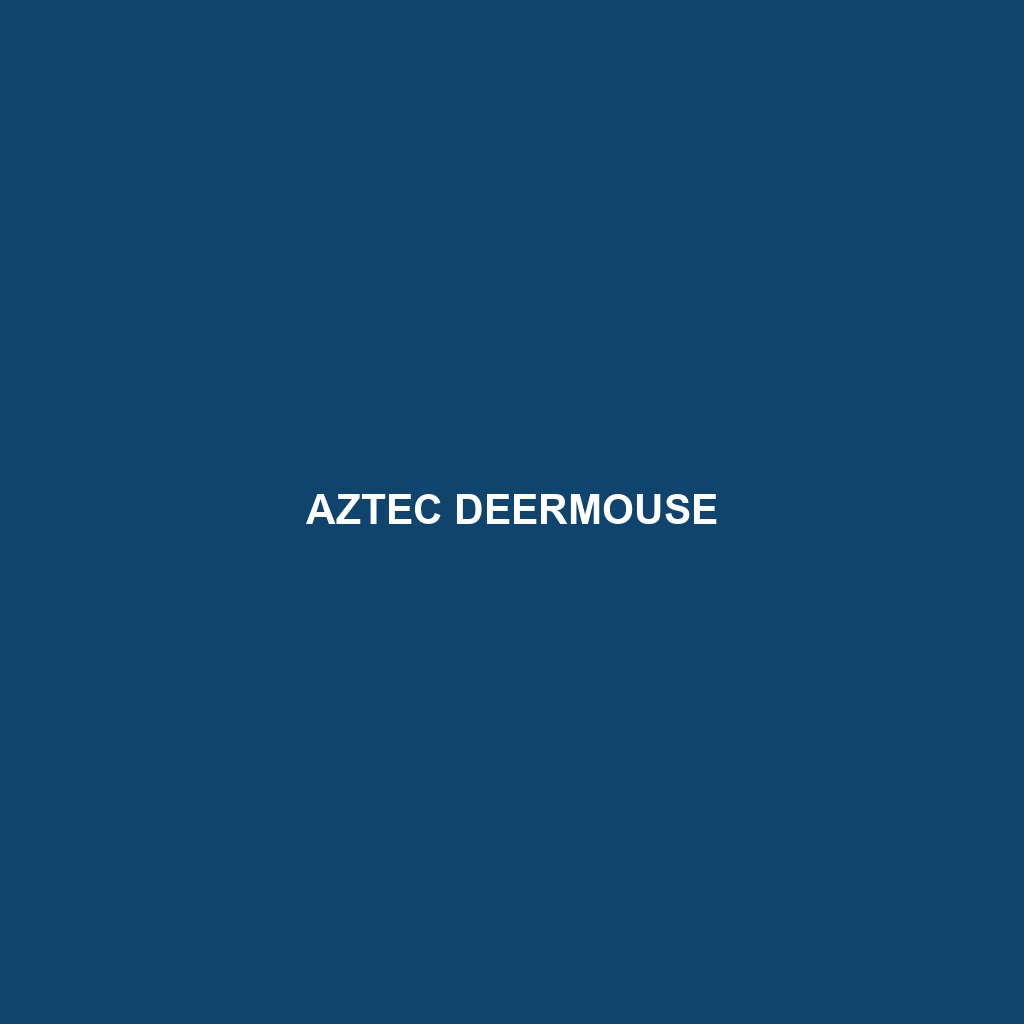Common Name: Aztec Deermouse
Scientific Name: Peromyscus aztecus
Habitat:
The Aztec Deermouse is primarily found in the mountainous regions of central Mexico, particularly in areas characterized by dense forests and high shrublands. This species prefers elevations ranging from 1,500 to 3,500 meters, where it can thrive in environments with a temperate climate and abundant vegetation.
Physical Characteristics:
The Aztec Deermouse typically measures about 8 to 10 inches in total length, including a tail that can reach up to 5 inches. Its coat is generally soft and exhibits a mix of gray-brown coloration with white underparts. Distinctive features include large, rounded ears and a slender body, which aid in its agility and adaptability in its natural habitat.
Behavior:
Aztec Deermice are primarily nocturnal, displaying active behaviors during the night. They are known for their agile movements and are adept at climbing, enabling them to escape from predators. Their social structure is typically solitary or in small family groups, where they communicate through a series of vocalizations and scent markings. These behaviors may intrigue researchers and nature enthusiasts alike.
Diet:
The diet of the Aztec Deermouse primarily consists of seeds, fruits, and insects, with a particular preference for various plant materials found in their mountainous habitat. Their foraging habits contribute to seed dispersion, making them an integral part of the ecosystem. This granivorous diet reflects their adaptability to available food sources across different seasons.
Reproduction:
The reproductive habits of the Aztec Deermouse typically begin in the spring and can extend through the summer months. Females give birth to litters of 2 to 5 offspring after a gestation period of around 25 to 30 days. Mothers exhibit nurturing behaviors, providing protection and care to their young until they are weaned and capable of independent foraging.
Conservation Status:
The Aztec Deermouse is currently listed as vulnerable due to habitat loss and environmental changes impacting its mountainous regions. Conservation efforts are essential to address the threats posed by deforestation and urbanization, ensuring the survival of this unique rodent species.
Interesting Facts:
One of the fascinating aspects of the Aztec Deermouse is its role in local folklore, where it symbolizes resourcefulness and adaptability. Furthermore, these mice can be found at altitudes higher than many other rodents, showcasing their remarkable ability to thrive in challenging environments.
Role in Ecosystem:
The Aztec Deermouse plays a crucial role in its ecosystem as both a seed disperser and a prey species for various predators, including birds of prey and snakes. Their feeding habits help promote plant diversity, while their presence supports the food web, highlighting their importance to maintaining the ecological balance of their mountainous habitats.
